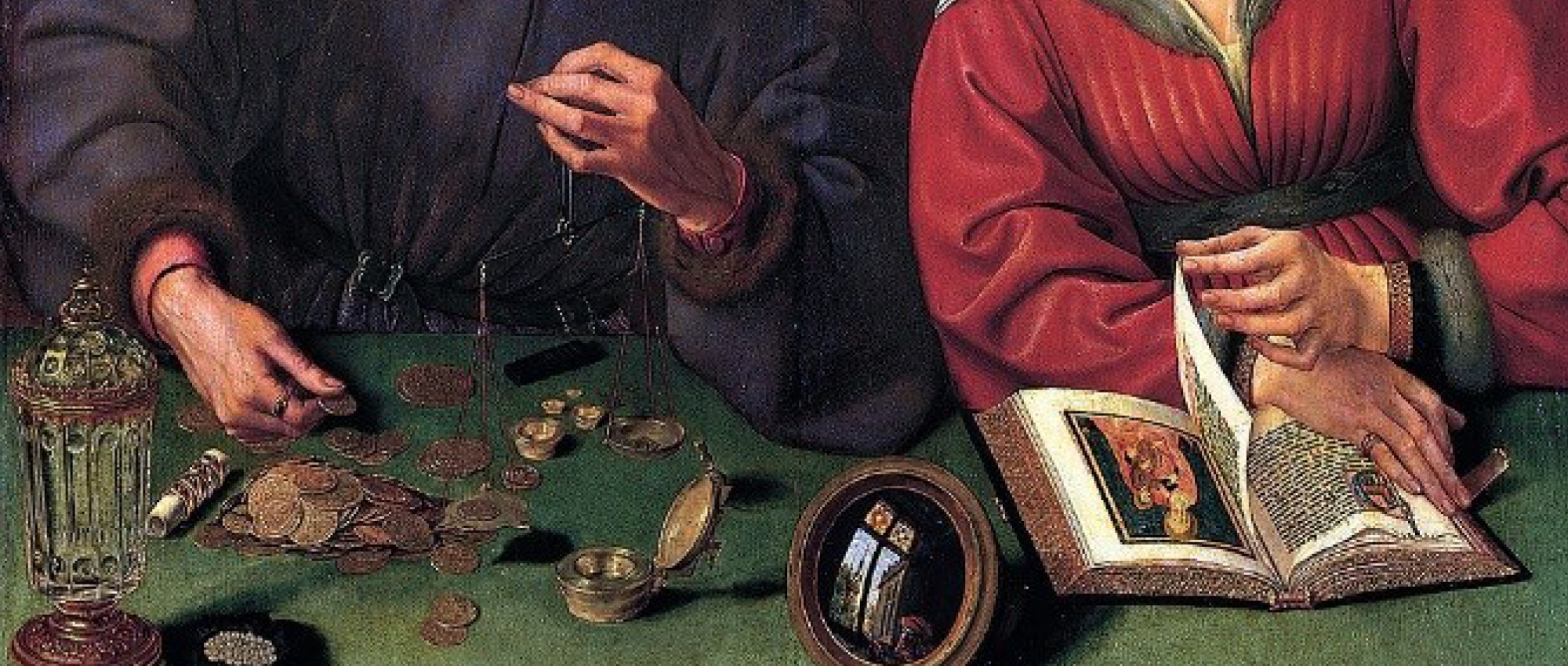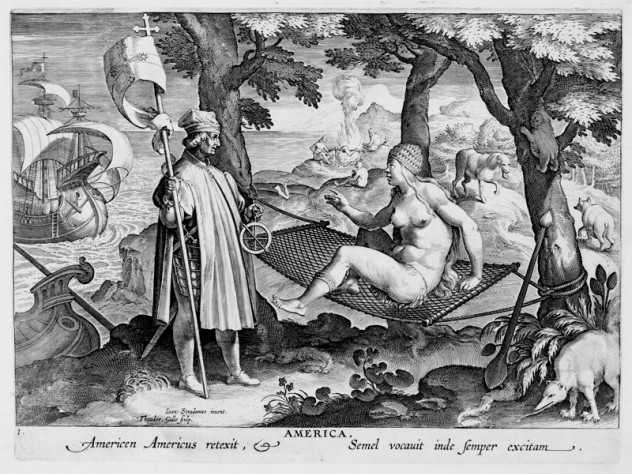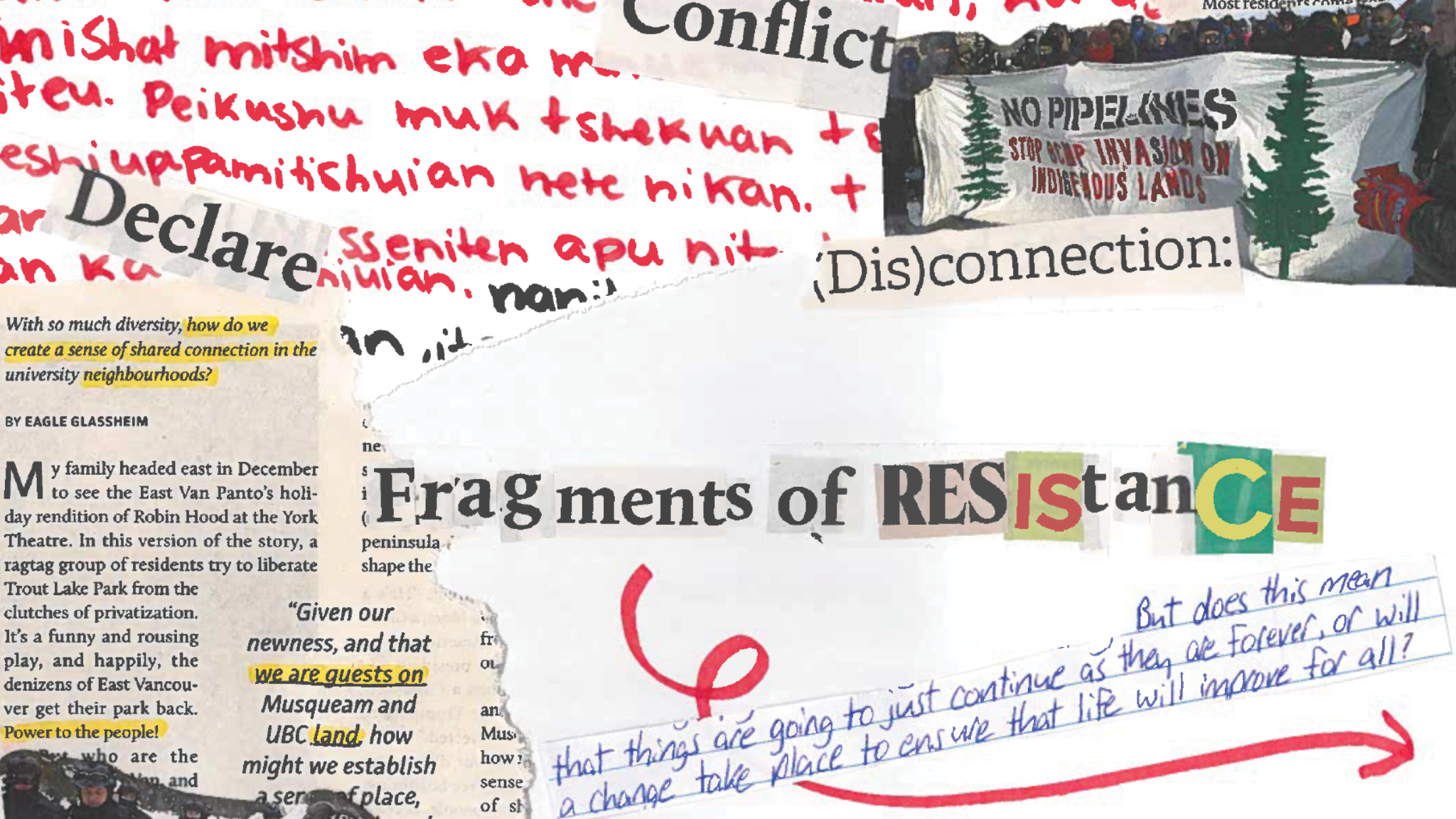Dr. Elizabeth Lagresa-González, Assistant Professor of Hispanic Studies at UBC, investigates the intersection between gender, genre, and cross-cultural transactions in literature.


Quentin Metsys. The Moneylender and His Wife, 1514. Louvre, Paris.
“My research examines what Mary Louis Pratt calls contact zones: spaces where disparate cultures meet, clash, and grapple with each other, often in highly asymmetrical relations of domination and subordination.1”
Early modern literature is filled with references to money: fertile sources of metaphors to illuminate questions of identity, authenticity, and value. Though recent scholars have fomented a re-appreciation of romance by incorporating theories of materialism that bring to the forefront the concrete socioeconomic subtexts that permeate this genre, the ubiquitous role performed by women within suspect economic systems remains largely unexplored.
The Business of Romance
My first monograph, The Business of Romance: Reappraising Women’s Cross-Cultural Transactions in Early Modern Spanish Novellas, tackles the loaded intersection between romance novellas, monetary networks and female figures, which presents a series of questions that have yet to garner thorough critical examination: Why is money integral to the female-centric world of romance? How does our notion of romance change when the happy endings are paid for by women through illicit means? What role do women play in an increasingly global context dominated by the mediation of semantic, material and human exchanges?
My research brings to light the complex roles women perform within cross-cultural contexts by investigating the intersection between gender, genre, and economic transactions.
From Renegades to Cannibals
My second book, tentatively titled From Renegades to Cannibals: Early Modern Spanish Drama and Cross-Cultural Encounters, continues to expand on my interest in the exchange of objects and subjects across national and disciplinary borders by investigating how and why the early modern Spanish stage became a pivotal space for the representation of transcultural encounters.
The project’s goal is to explore how various plays represent conflicts and possibilities of reconciliation between self and ‘other’ in the context of transnational travel, war, commerce and exploration. Some of the questions I intend to address include: How do these representations participate in the production of a global consciousness or awareness? How might these encounters transform the subjects involved and the genres that brought them to life? The project intends to promote dialogue across cultural and disciplinary boundaries by focusing on how these texts engaged beyond the reflection of existing attitudes, and actively contributed to the comprehension of a transforming world.


Dr. Elizabeth Lagresa-González, Assistant Professor of Hispanic Studies
Approaches
As a specialist of early modern Spanish literature and culture, I approach my research from an interdisciplinary perspective privileging the intersection of literature and gender theory, visual studies and material culture.
The Business of Romance
In my first monograph, The Business of Romance, I aim to shed light on the overlooked role women performed within cross-cultural economic transactions in 17th century Spain by applying theories of new economic and material criticism to the analysis of romance novellas. The work is structured along the lines of transatlantic, trans-European and Mediterranean economic exchanges, taking into account relevant historical texts (e.g. treatises by theologians, political economist, humanists and mercantile authors). It highlights the agency wielded by women in the often illicit and marginal economic networks that crisscross varied contact zones.
From Renegades to Cannibals
In my second book project, From Renegades to Cannibals, my goal is to address both the upsurge in theatrical and commercial innovations, and the rise of global networks during the Renaissance. I intend to investigate the varied ways plays stage encounters between Spaniards and indigenous people of the Americas, Europeans of diverse religions, and the vast Ottoman world by studying works from Lope de Vega (El Arauco domado, El remedio en la desdicha, La corona trágica), Cervantes (La gran sultana and El trato de Argel), Guillén de Castro (El renegado arrepentido), Tirso de Molina (Las amazonas en las Indias) and Juan Pérez de Montalbán (La monja alférez) among others.


Theodore Galle, after Stradanus (Jan van der Straet), Discovery of America, from Nova reperta (New inventions and discoveries of modern times), c. 1599–1603. Engraving
Insights
Though the symbolic connection between money and literature has long been noted by scholars as Jean Joseph Goux and Marc Shell — and the connection between material culture and early modern Spanish literature has been explored by scholars as Johnson, De Armas, Munjic, Fuchs and García Santo-Tomas — they, for the most part, remain largely unproblematized as it relates to gender studies.
My research suggests:
- the language, matter and imagery of money, omnipresent in early modern literary culture, is ubiquitously linked to female figures and the suspect economic networks they navigate;
- the relationship between women and economic concerns is keenly visible in the development and transformation of the narrative mode of romance novellas — where their capacity for trans-genre experimentation is well suited to reflect and complicate contemporary crises of coinage, value, authority, and identity;
- representations of romance women are productive sites to explore the ambivalence of early modern state and subject formation, as well as the re-fashioned relationship between objects and subjects in an emergent global commercial culture.
In effect, female subjects, often conceived as marginal subjects and objects of exchange within a developing early modern mercantile economy, actively circulated and interacted across cultural, social, linguistic, religious, material and geographic boundaries.
Furthermore, my findings indicate how through these trans-actions and cross-fertilizations, both objects and subjects accrued different forms of value and meaning – sometimes transforming themselves into conciliatory and profitable alternative models of cross-cultural exchange.
The goal of my investigation of early modern texts is to help us better comprehend shifting relations between self and ‘other’ through history, challenging our own, well-established models of cross-cultural interaction.
———
1Pratt, Mary Louise. Imperial eyes: travel writing and transculturation. New York, Routledge, 1992, p. 7.
Learn more about Dr. Elizabeth Lagresa-González.


